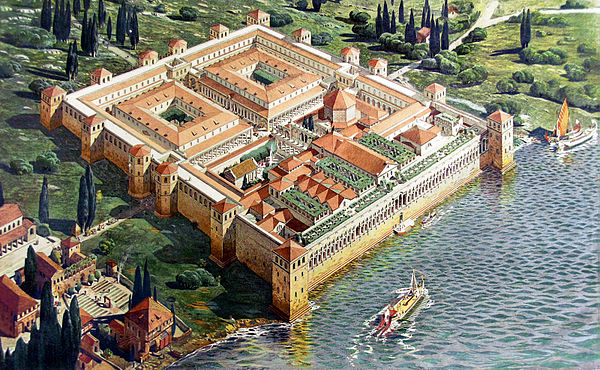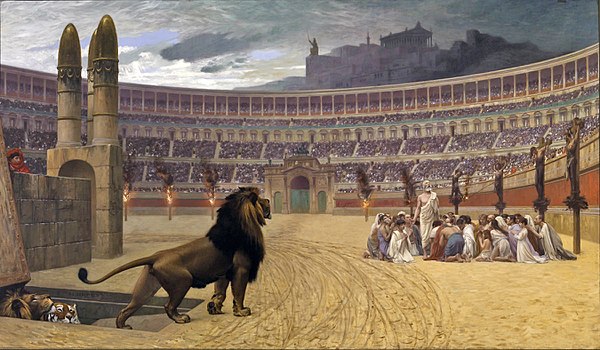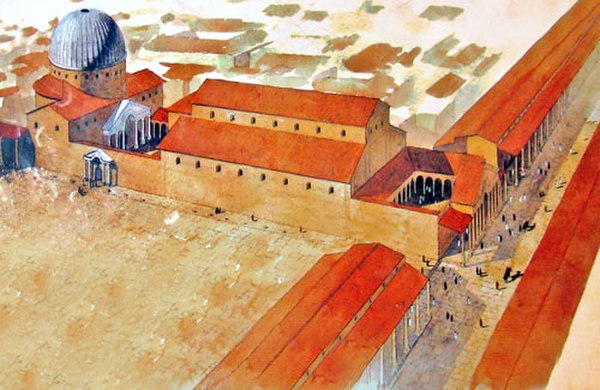Constantine reunited the Empire under one emperor, and he won major victories over the Franks and Alamanni in 306–308, the Franks again in 313–314, the Goths in 332, and the Sarmatians in 334. By 336, he had reoccupied most of the long-lost province of Dacia which Aurelian had been forced to abandon in 271.
In the cultural sphere, Constantine revived the clean-shaven face fashion of earlier emperors, originally introduced among the Romans by Scipio Africanus and changed into the wearing of the beard by Hadrian. This new Roman imperial fashion lasted until the reign of Phocas.
The Holy Roman Empire reckoned Constantine among the venerable figures of its tradition. In the later Byzantine state, it became a great honor for an emperor to be hailed as a "new Constantine"; ten emperors carried the name, including the last emperor of the Eastern Roman Empire. Charlemagne used monumental Constantinian forms in his court to suggest that he was Constantine's successor and equal. Constantine acquired a mythic role as a warrior against heathens. His reception as a saint seems to have spread within the Byzantine empire during wars against the Sasanian Persians and the Muslims in the late sixth and seventh century. The motif of the Romanesque equestrian, the mounted figure in the posture of a triumphant Roman emperor, became a visual metaphor in statuary in praise of local benefactors. The name "Constantine" itself enjoyed renewed popularity in western France in the eleventh and twelfth centuries.





























